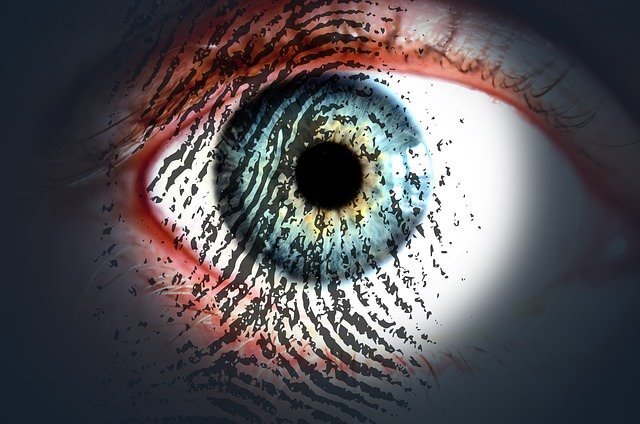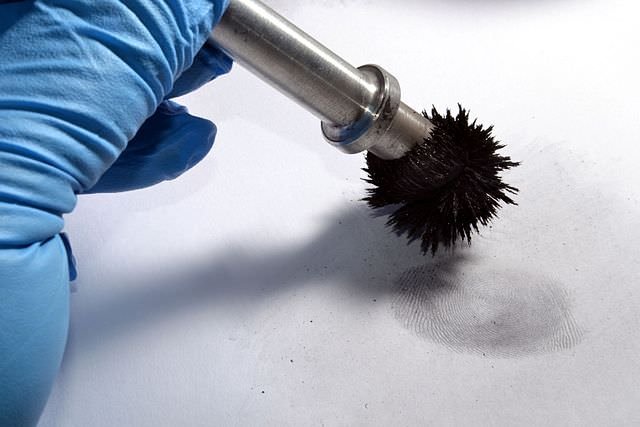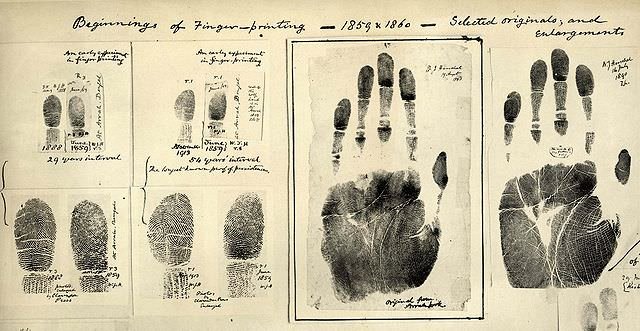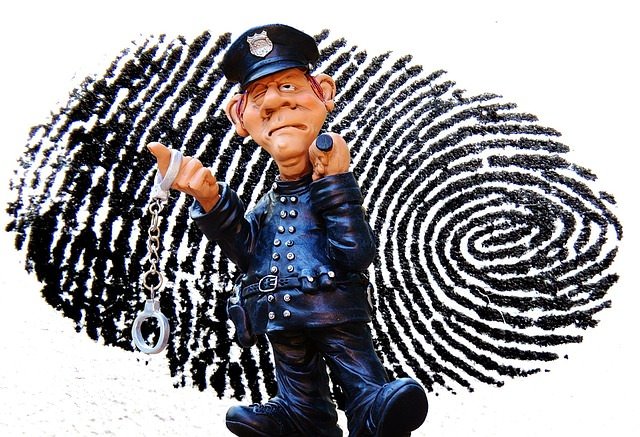Fingerprints might not be as unique as we've been told they were. The long history of latent fingerprints used in forensics to catch criminals has been judged as unquestionable proof to tie someone to the use of an object or place them at a scene. But this is coming into question from a report by published in the American Association of the Advancement of Science in 2017, titled Forensic Science Assessment: A Quality and Gap Analysis.

Source
We have concluded that latent print examiners should avoid claiming that they can associate a latent print with a single source and should particularly avoid claiming or implying that they can do so infallibly, with 100% accuracy.
Latent fingerprints are hidden impressions that are revealed by the use of powders or lasers. The prints are then lifted from the surface, such as with tape, in order to be further analyzed. Comparing the latent fingerprints with a database of fingerprints allows similarities in the structure of prints to identify individuals.

Source
We have long been told that no two fingerprints are the same. Every fingerprint is said to trace back to one person only. But that's not exactly true. An analysis can conclude that a fingerprint doesn't match the majority of a population, but there is a lack of data to prove how unique a fingerprint actually is. The report concludes that this is why it's "scientifically baseless" to claim an analysis can narrow the source down to a single person without question.
Emeritus Professor Joseph B. Kadane of the Department of Statistics and Social and Decision Sciences at Carnegie Mellon University said of this team's finding:
"Fingerprinting is one of the most heavily used forensic methods. Routinely, fingerprint analysts report and testify to 'identification,' that is, that the person who left the mark at the crime scene is the same person whose fingerprint is in the database. Our review of the scientific literature found that there is no scientific way to estimate the number of people in some community — a city, a state, the country, the world — who share the characteristics found, and hence no scientific basis for identification"

Source
This isn't the first study to have come to this conclusion. And the notion that fingerprints are unambiguous clear-cut and dry evidence has been at fault in criminal cases where it's been used to wrongfully convict innocent people. The researchers hope to help solve some issues raised in their report, such as keeping knowledge of the case from fingerprint examiners so as to not bias their findings:
"Studies have shown that latent print examiners (like all human beings) are vulnerable to contextual bias. Their evaluations of the features of latent prints can be influenced inappropriately by premature exposure to reference prints; their conclusions can also be influenced inappropriately by information about the underlying criminal investigation"
Fingerprints can also have distortions. More work needs to be done on the proficient of infra-finger variability. All 10 fingers represent distinct ridge patters, loops, arches and whorls, and they are helpful to identify specific people. But the potential pool of human fingerprints makes it so that a set of fingerprints can't be used as an absolutely unique identifier. There isn't "enough data to determine how many people might display similar features."
Uncertainty in this area means there is an inadequate scientific foundation for determining how many features, or what types, are needed in order for an examiner to draw definitive conclusions about whether a latent print was made by a given individual and hence… examiners should not draw such conclusions.

Source
Another test the report suggests is to slip known fingerprints into the normal flow of casework to test the accuracy rates of analysis. They also suggest more automated systems to get around the cognitive bias of examiners.
Fingerprint science is a great tool for investigating crime and has helped in finding countless criminals who would have gotten away otherwise. Guilty people have been found, and innocent people have been let go as a result. But sometimes they aren't so reliable and innocent people get thrown into the category of a guilty person simply because a fingerprint is found.
We've been influenced to believe a falsity as truth: that fingerprints are 100% accurate in identifying someone, but that isn't the case, as this reports lays out. This belief still persists despite most examiners having stopped claiming fingerprint analysis is "100% accurate", instead saying they are "practically certain of" the the identity of a latent print.
References:
- Fingerprints lack scientific basis for legal certainty
- Maybe your fingerprints aren’t so unique after all
- Fingerprint Source Identity Lacks Scientific Basis for Legal Certainty
- Forensic Science Assessment: A Quality and Gap Analysis
Thank you for your time and attention. Peace.
If you appreciate and value the content, please consider: Upvoting, Sharing or Reblogging below.
 me for more content to come!
me for more content to come!
My goal is to share knowledge, truth and moral understanding in order to help change the world for the better. If you appreciate and value what I do, please consider supporting me as a Steem Witness by voting for me at the bottom of the Witness page.

This study also doesn't consider how easy it is to frame the usual suspect. If you want to kill someone's wife all you have to do is frame the husband. Law enforcement will ignore every other lead if they are led on a cookie crumb trail that points to the most probable outcome.
Seriously though, is it really that hard to plant finger prints and DNA at the scene of the crime? What about law enforcement planting evidence because they are "sure" the person did it?
The judicial system is a sham. We are much more focused on revenge and pointing the blame rather than true justice and making the world a better place.
Downvoting a post can decrease pending rewards and make it less visible. Common reasons:
Submit
I saw that happen the Ben Affleck once.
Downvoting a post can decrease pending rewards and make it less visible. Common reasons:
Submit
lol
Downvoting a post can decrease pending rewards and make it less visible. Common reasons:
Submit
Yup, that's what I was thinking when I mentioned how innocent people get convicted too all because a print was found.
Downvoting a post can decrease pending rewards and make it less visible. Common reasons:
Submit
Whoever said fingerprints are 100% sure is wrong and was always wrong. No sane knowledgeable person ever said that.
Also fingerprinting normally uses a certain subset of "identifiers" and not the whole print.
Fingerprints can be a very reliable tool, but no 100% sure method. Same goes for genetics. A 1:1'000'000 chance still means that in certain areas of the world there are 20 more people with the "same" DNA inside walking distance.
Downvoting a post can decrease pending rewards and make it less visible. Common reasons:
Submit
Yeah, they are very useful, but have their issues if thought to be 100% accurate to identify people in all cases. Good point on the DNA tests too ;)
Downvoting a post can decrease pending rewards and make it less visible. Common reasons:
Submit
Sarcasm: My jaw is on the floor, you mean a corrupt system is using inaccurate means to prosecute innocent people?
Just one of the many methods used to keep people guilty until proven innocent... not to mention the fact that 99.9% of man's law has no basis in Natural Law and most of these peopl belong nowhere near a court room.
Thanks @krnel!
Downvoting a post can decrease pending rewards and make it less visible. Common reasons:
Submit
Yeah, it can be blindly believed to promote guilt just because there is a print :/
Downvoting a post can decrease pending rewards and make it less visible. Common reasons:
Submit
Well, this could certainly call a lot of convictions into question!
It also makes me wonder just how secure my new cell phone with the fingerprint scanner on the back is. What are the odds that someone who steals my phone is able to log in because we are fingerprint twins?
Downvoting a post can decrease pending rewards and make it less visible. Common reasons:
Submit
Not likely ;) But maybe they can lift your print from your phone and use that to unlock it ;)
Downvoting a post can decrease pending rewards and make it less visible. Common reasons:
Submit
So long as they don't cut my finger off and use that!
Posted using Partiko Android
Downvoting a post can decrease pending rewards and make it less visible. Common reasons:
Submit
Curated for #informationwar (by @wakeupnd)
Our purpose is to encourage posts discussing Information War, Propaganda, Disinformation and other false narratives. We currently have over 8,000 Steem Power and 20+ people following the curation trail to support our mission.
Join our discord and chat with 250+ fellow Informationwar Activists.
Join our brand new reddit! and start sharing your Steemit posts directly to The_IW, via the share button on your Steemit post!!!
Connect with fellow Informationwar writers in our Roll Call! InformationWar - Leadership/Contributing Writers/Supporters: Roll Call
Ways you can help the @informationwar
Downvoting a post can decrease pending rewards and make it less visible. Common reasons:
Submit
Lovely sir
Downvoting a post can decrease pending rewards and make it less visible. Common reasons:
Submit
and this guy made two snowflakes the same! So I guess no one is a special snowflake.
Downvoting a post can decrease pending rewards and make it less visible. Common reasons:
Submit
I am beginning to think that most of modern science is a fraud.
Downvoting a post can decrease pending rewards and make it less visible. Common reasons:
Submit
I am beginning
To think that most of modern
Science is a fraud.
- martinmcfly
I'm a bot. I detect haiku.
Downvoting a post can decrease pending rewards and make it less visible. Common reasons:
Submit